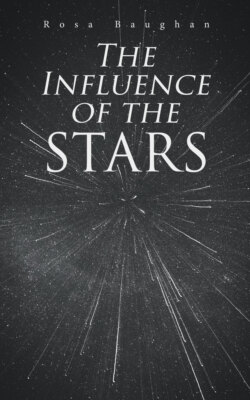Читать книгу The Influence of the Stars - Rosa Baughan - Страница 7
На сайте Литреса книга снята с продажи.
CHAPTER II.
THE ALPHABET OF ASTROLOGY
ОглавлениеTable of Contents
The Science of Astrology consists of four branches, namely, Mundane Astrology, which is the art of foreseeing, by the aspect of the stars, at certain periods, the events likely to happen to nations, such as pestilences, wars, inundations and earthquakes; Atmospherical Astrology, which is the art of foreseeing, by the positions of the heavenly bodies, the quality of the weather at any particular time or place; the Casting of Nativities, or the art of foretelling, from the position of the stars at the moment of birth, the fate and character of the native; and Horary Astrology, or the art of foreseeing, by the positions of the heavens at the moment, the result of any business or circumstance.
As the two former branches are treated in the astrological almanacks issued every year by Zadkiel, Raphael, Orion, and others, it is needless to go into them; but as the casting of nativities and the answering of horary questions require individual treatment, the working of these two branches of astrology (after the ancient methods) shall be described as clearly as possible.
Before the student can do anything in astrology he must master its alphabet—that is, he must make himself thoroughly acquainted with the symbols used to represent the planets, the signs of the zodiac and the aspects.
The planets recognised by the ancient astrologers are, as we have seen, seven in number, and are as follows, with their symbols:—Saturn, ; Jupiter, ; Mars, ; Sol, ; Venus, ; Mercury, ; Luna, .
There are also the Dragon's Head, thus symbolised, ; and the Dragon's Tail, . These are neither planets nor signs of the zodiac, nor constellations, but are only the nodes or points where the ecliptic is crossed by the Moon. One of these points looks northward, where the Moon begins her northern latitude, and the other points southward, where she commences her south latitude. The head of the Dragon is considered of a benevolent nature; the tail of the Dragon is of evil tendency.
There are also the twelve signs of the zodiac, which are as follows, with their symbols:—
| Northern. | Southern. | |||
| Aries | Libra | |||
| Taurus | Scorpio | |||
| Gemini | Sagittarius | |||
| Cancer | Capricorn | |||
| Leo | Aquarius | |||
| Virgo | Pisces |
Through these twelve signs the planets continually move, and are ever in one or other of them.
They are divided into north and south. The first six, from Aries to Virgo, are northern; the latter six, from Libra to Pisces, are southern; this is because the Sun and planets when in the first six are north of the equator, and when in the last six they are south of that line.
Each point of the zodiac rises and sets once every twenty-four hours, occasioned by the earth's revolution on its axis once every day; therefore, when any given point is rising, the opposite point must be setting. 3
As the zodiac consists of 360 degrees from the first point of Aries until we come to that point again, and as these are divided into twelve portions or signs, they must consist of 30 degrees each.
The aspects are five in number; they represent certain positions which the planets bear to each other as they move through the signs of the zodiac; they are as follows, with their symbols:—
Conjunction, when two planets are in the same place, viz., in same degree of the same sign.
Sextile, when they are 60 degrees or two signs apart.
Square, when they are 90 degrees or three signs apart.
Trine, when they are 120 degrees or four signs apart.
Opposition, when they are 180 degrees or six signs asunder.
The conjunction () is rather a position than an aspect, as planets can hardly be said to aspect each other when they are in the same place. When Saturn is in the first degree of Aries, and any planet in the same degree of that sign, they are said to be in conjunction; this is good or evil, according to the nature of the planets thus posited.
The Trine () is the most powerful of all the good aspects.
The Sextile () is favourable.
The Square () is evil.
The Opposition () is also very evil.
There are several other aspects (sometimes called the "modern aspects") invented by Kepler; but as they only appear to complicate what is at best a very intricate study, it is best to ignore them and adhere in this, as in the matter of the planets, to the old methods.
